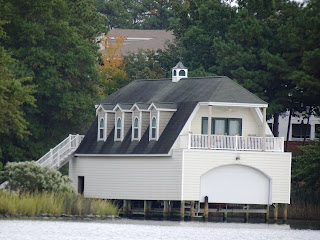 |
| This is one of the last remaining screwpile lighthouses still in active service. It was on the Western Shore south of Annapolis. |
 |
| The Maryland state capitol dome. |
 |
| This is one of the last remaining screwpile lighthouses still in active service. It was on the Western Shore south of Annapolis. |
 |
| The Maryland state capitol dome. |
 |
| Not a really old town but full of history. |
 |
| If you click to enlarge, you can see the corner towers are at angles instead of the usual rounded way. This was the first house in Millionaire Row. |
 |
| Not sure what the original colors were on this house but looks like a piece of architectural confection now. I love the wrap around porches. |
 |
| This was my favorite. It had all sorts of nooks and crannies and odd shaped rooms that would be fun to explore. It is for sale and Christmas is coming in case anyone wanted to buy it for me :) |
 |
| Not a mansion but very cool lawn art. What better way to utilize an old kayak? |
 |
| At one point, Reedville boasted over 18 Menhaden processing plants. The oil was seen as a replacement for fast disappearing whale oil. This was the remains of one of those factories. |
 |
| This was all that was left of another factory. |
 |
| Boats at the Reedville Fishing Museum are kept in good shape. |
 |
| The modern plant can process millions of tons of fish a year. |
 |
| As most maritime museums, Calvert had a large collection of Chesapeake Bay fishing boats. The one in the foreground was a log fishing boat. |
 |
| What made this fishing boat rare was the joinery used. Instead of the usual metal pins, the logs were joined with mortise and tenon bits of wood. |
 |
| It always amazes me to think of the tremendous effort required to shape a dugout canoe buy they were once quite common on any river in the hemisphere. |
 |
| These 20 foot canvas canoes were from a local summer camp. The picture showed a group of eager learners with 2 experienced campers as teachers. |
 |
| This screwpile lighthouse is similar to the one at St. Michael's but this one had been outfitted with household pieces from the time it was in use and the entire living area was open for touring. |
 |
| David wanted in on the shark action. |
 |
| It is late September when we visit the first time but the change of seasons is clear in the leaves. |
 |
| Now that is some man cave! |
 |
| The city park is small but attractive and provides access to the lagoon behind the island. |
 |
| On the river side of the road is a large park and pavilion. |